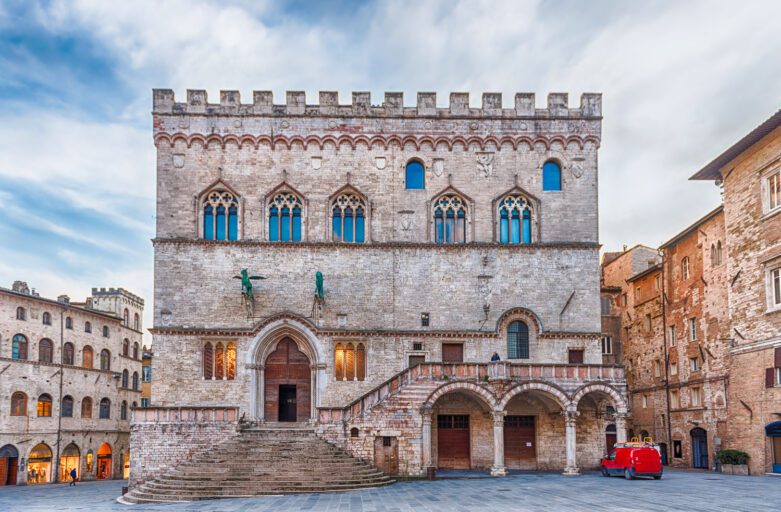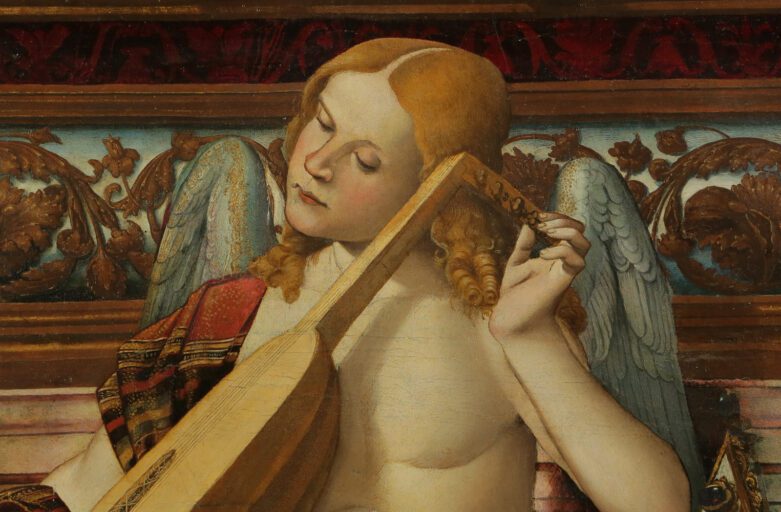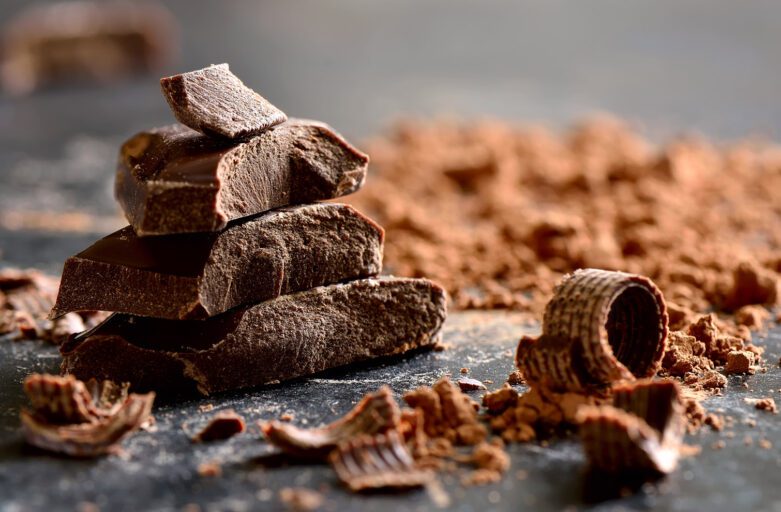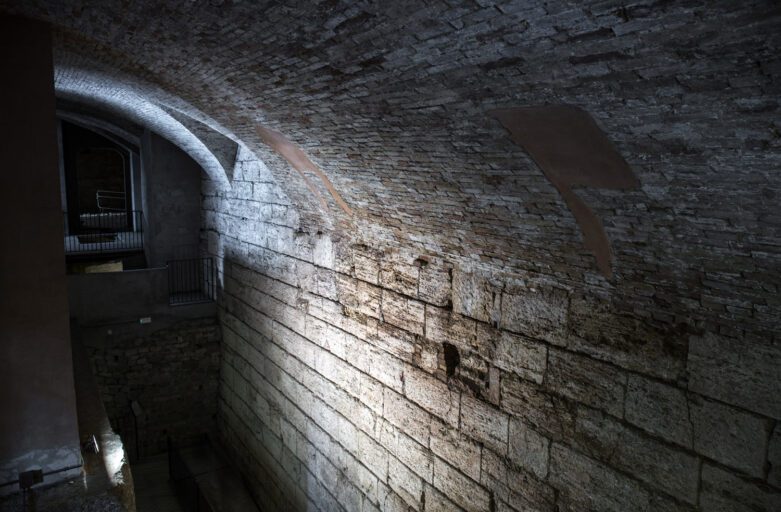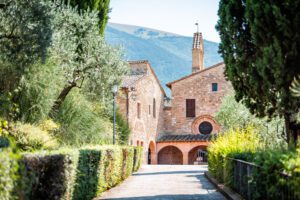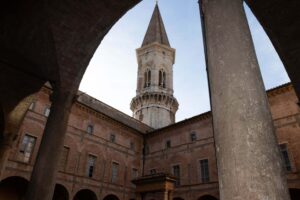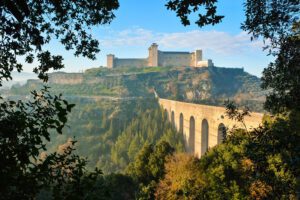A Town Symbol
The Palace of Priors is undoubtedly one of the most important buildings in Perugia, beside being a masterpiece in Gothic style. Its structure develops partly along Main Street (Corso Vannucci) in the old town center, and has its acme in the façade facing the main square, Piazza IV Novembre.
The square, one of the most beautiful in Italy, is marked by the strong polar opposition between the civil side of the town, precisely the Palace of Priors, and the religious side, i.e. the buildings in the so-called Saint Lawrence “Island,” in a Medieval atmosphere enlivened by the water springing from the Great Fountain.
The “New Palace of Perugia's People”: Its Evolution
The fruit of a long andcomplex building process, in several phases between 1293 and 1443, the Palace of Priors in Perugia is among the most majestic, astounding architectural expressions of Medieval civilization in Italy. Perugia's Commune had two reasons to invest in this building: 1. Give a positive, material shape to its own institutions, thus affirming its own political autonomy, and 2. Have a fitter seat for the new local magistrature (political leaders), the Priori.
The Priors were ten: the spokesmen of the main Arti, that is, guilds or professional associations. They would start to live in their new lodgings in 1353, after the enlargement made by the then architect, Ambrogio Maitani, in 1317-26.
Two architects from Perugia had been entrusted with the first building site, Jacopo di Servadio and Giovannello di Benvenuto. They were authorized to expand the original nucleus of the palace, that corresponded to the first three windows currently toward the square and to the wall in Corso Vannucci up to the tenth window. Further enlargements of the façade toward the square date back to 1333, when the Sala della Vaccara (something like “Hall next to the Cow Area”) was added where a church had existed, dedicated to Saint Severus, and now demolished.
More Enlargements along Main Street
All subsequent enlargements took place in the direction opposite to the square, southward; they were completed in 1457, when the Church of Saint John al Foro (near the Forum) was also incorporated. It became part of the Collegio del Cambio, the association of money changers. Even if the work lasted for such a long period, the original Gothic style was never cast off, so as to get a wonderful overall harmony.
In the 16th century, however – when the Popes ruled the town – the Medieval features of the palace were deeply altered. For example, merlons and three-part windows disappeared. They would be reinstated after 1860, following the National Unification of Italy.
Currently housing the Galleria Nazionale dell'Umbria (National Art Gallery in Umbria), the Palace of Priors has anyway maintained its original function and symbolic meaning insofar as it is the location of the Town Hall – a perfect link between past and present.
The Façade and “Sala dei Notari”
The façade of the Palace of Priors toward the main square (Piazza IV Novembre) displays a wonderful three-lobed Gothic doorway, sided by two three-lobed windows,
Above them, other five three-lobed windows can be seen, the two on the right having been added during the 1333 enlargement. The doorway, that leads into Sala dei Notari (Hall of Notaries), is dominated by two bronze statues: the Griffin, the symbol of Perugia, and the Lion, a Medieval Guelph (pro-Emperor) symbol. These are copies; the original statues, that had perhaps been made for a lost fountain, are on exhibition in the entrance hall of the palace itself in Corso Vannucci.
The amazing hall you will enter through the main doorway was originally called “People's Hall,” where “people” corresponded to the middle class. Here the people's assemblies of the Commune took place, and the tribunal of the Capitano del popolo (People's Chieftain) had its location. Only starting from 1582 did it become the seat of the association of notaries, after which it was then named. The vast room has a vaulted ceiling, supported by eight powerful round arches. On both the arches and the walls in between, a rich set of paintings can be admired, of the late 13th century. The cycle includes legends, stories from the Bible, and visual sayings, alternating with the crests of many noble families, people's chieftains, and podestà (Medieval mayors).
Though this wonderful hall no longer plays an institutional role, it still exerts a great attraction on the whole population, so that it is frequently used for meetings, lectures, concerts, and institutional events too.
The Side in Main Street, the Gate of Guilds
The side of the Palace of Priors in Corso Vannucci, curiously curvy and swollen, clearly shows the different architectural phases that followed one another during the centuries. Nineteen beautiful Gothic three-part windows at the second floor, made in a combination of white and rosy stones, echo the shapes of the façade in Piazza IV Novembre. Here in Main Street also opens the Portale Maggiore, the “Great Gate.”
This is actually the main entrance to the palace. Built in 1346 by local workers, it has a rich decoration in sculptures. On both sides of it, two square pillars, supported by lions, shows the sculpted allegories of Magnanimity, Fertility, and Pride on the right; on the left, the allegories of Greed, Abundance, and Humbleness. The two griffins on top of the pillars claw calves – the symbol of the corporazione (association, guild) of butchers, who sponsored the work. Top left, an inscription carved on a cartouche held by a character reads, in Medieval Italian: Entra puro, move securo, “Enter in purity (of intentions), walk safely,” as if to indicate a basic feature needed in order to access the place.
Moving toward the Great Fountain, the town's past and present merge again. The artisan workshops of the Middle Ages have been replaced by new shops between the very same walls, a clear sign of a never-ending story.
INFORMAZIONI
Località
Piazza IV Novembre, 06121 Perugia PG
Contatti
info@secretumbria.it
